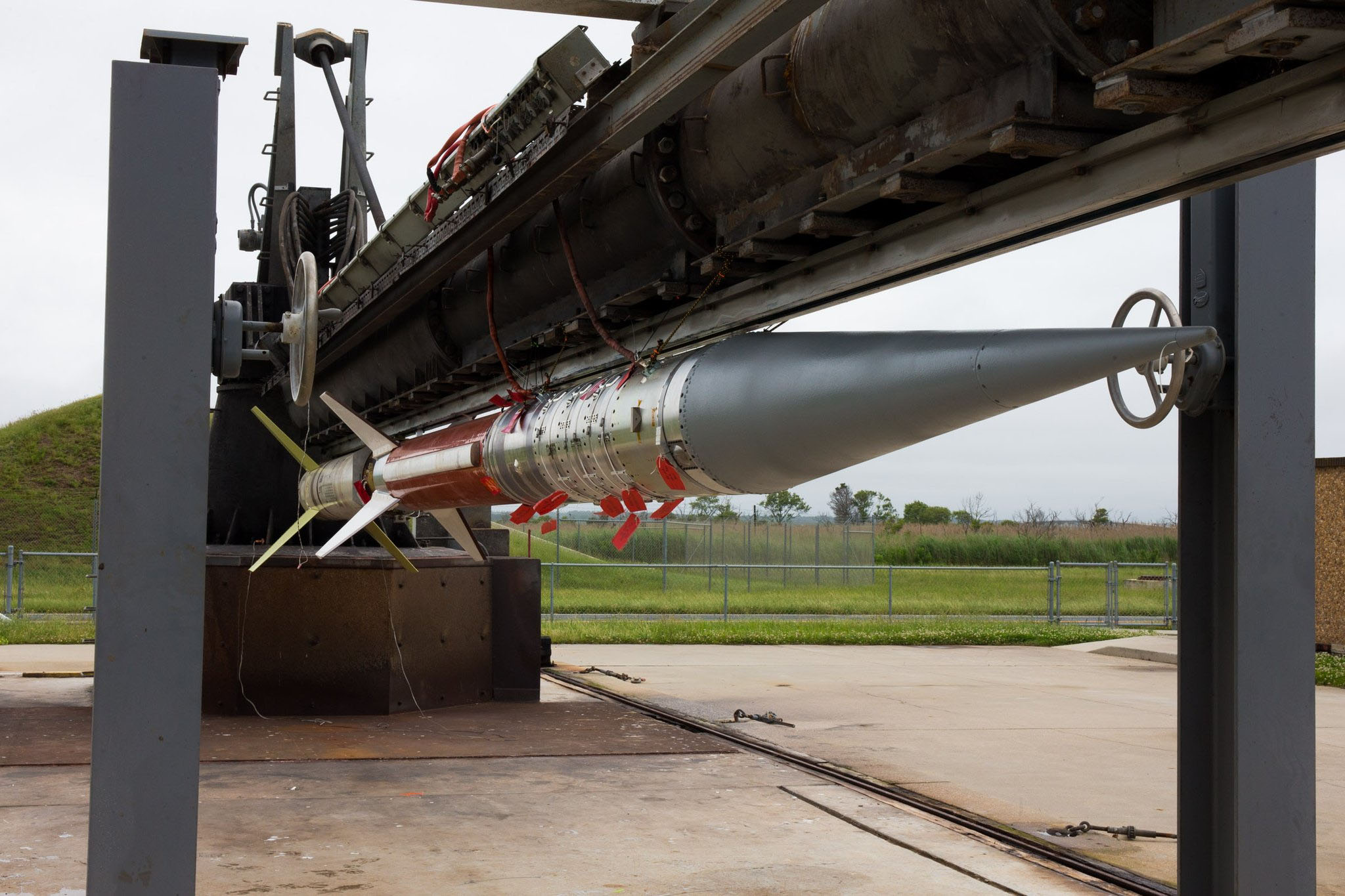Look Up! NASA Launch Will Create Colorful Clouds
Update for June 27, 5:30 p.m. ET: NASA has once again delayed the launch of the artificial cloud mission due to unexpected cloudiness around the Wallops Flight Facility launch site. NASA has announced the next launch attempt to be Thursday, June 29 sometime between 4:25 and 4:48 a.m. EDT. The backup launch day is June 30.
NASA is hoping to execute a rocket launch that will create artificial glowing clouds. These could be visible to millions of people along the U.S. East Coast.
A Terrier-Improved Malemute sounding rocket will launch into the night sky from NASA's Wallops Flight Facility on Wallops Island, Virginia. If all goes well, the rocket will create brilliant red and blue-green clouds of vapor as part of a canister-ejection technology test. Weather permitting, the clouds could be visible to observers on the East Coast between New York and North Carolina, and as far inland as Charlottesville, Virginia.
You can watch the rocket launch live here, courtesy of NASA Wallops, or directly from the Wallops center here: http://www.ustream.tv/channel/nasa-tv-wallops. NASA's live webcast will be accompanied by a Facebook Live event on the Wallops center's Facebook page here.

The primary goal of tonight's launch is to test a new canister (or ampoule) ejection system on the sounding rocket, NASA officials have said.
"The multicanister ampoule ejection system flying on this mission will allow scientists to gather information over a much larger area than [they were] previously able [to] during a sounding-rocket mission," NASA Wallops officials wrote in an update. "Canisters will deploy during the rocket's ascent, and they will release blue-green and red vapor to form artificial clouds between 4 and 5.5 minutes after launch. These clouds, or vapor tracers, allow scientists on the ground to visually track particle motions in space."
The mission is highly dependent on the weather, as the test requires clear skies over ground-camera sites at the Wallops Center and in Duck, North Carolina, NASA officials have said.
Get the Space.com Newsletter
Breaking space news, the latest updates on rocket launches, skywatching events and more!

In fact, this is the eighth time NASA has tried to launch this mission so far this month. Since June 1, the agency has been repeatedly thwarted by high winds, cloud cover and even boats in an offshore hazard area (where parts of the sounding rocket fall into the Atlantic Ocean).
If you live in the Wallops Island area and would like to watch the launch with NASA, you can visit the agency's Wallops Flight Facility.
You can also download the "What's Up at Wallops" app to find out where and when to look to see the launch from your location. Wallops officials are expected to post updates on Twitter and Facebook, too.
Editor's note: If you capture an amazing image of the sounding-rocket launch or the colorful artificial clouds that you would like to share with Space.com and its news partners for a story or photo gallery, send photos and comments to: spacephotos@space.com.
Email Tariq Malik at tmalik@space.com or follow him @tariqjmalik and Google+. Follow us @Spacedotcom, Facebook and Google+. Original article on Space.com.
Join our Space Forums to keep talking space on the latest missions, night sky and more! And if you have a news tip, correction or comment, let us know at: community@space.com.

Tariq is the Editor-in-Chief of Space.com and joined the team in 2001, first as an intern and staff writer, and later as an editor. He covers human spaceflight, exploration and space science, as well as skywatching and entertainment. He became Space.com's Managing Editor in 2009 and Editor-in-Chief in 2019. Before joining Space.com, Tariq was a staff reporter for The Los Angeles Times covering education and city beats in La Habra, Fullerton and Huntington Beach. In October 2022, Tariq received the Harry Kolcum Award for excellence in space reporting from the National Space Club Florida Committee. He is also an Eagle Scout (yes, he has the Space Exploration merit badge) and went to Space Camp four times as a kid and a fifth time as an adult. He has journalism degrees from the University of Southern California and New York University. You can find Tariq at Space.com and as the co-host to the This Week In Space podcast with space historian Rod Pyle on the TWiT network. To see his latest project, you can follow Tariq on Twitter @tariqjmalik.









